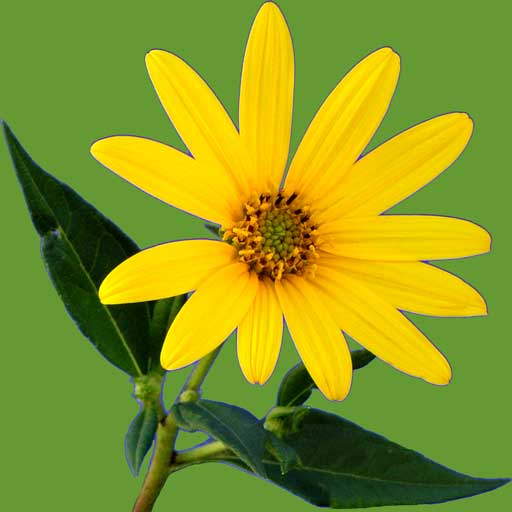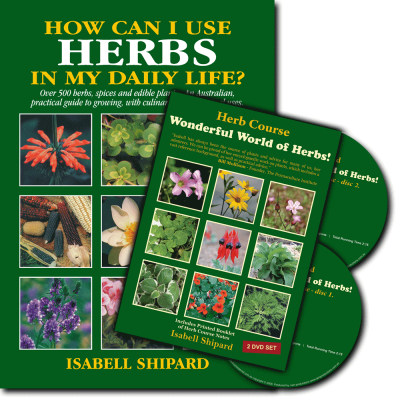(excerpts from How can I be prepared with Self-Sufficiency and Survival Foods?)
Salad greens are vital to health
Every person can grow salad greens, no matter what size their garden. Even a few pots with plants, outside the kitchen door on the balcony of a unit, will give a regular picking of leaves.

But why are salad greens important to health? Plants play an essential role in our lives. In fact, all food on our table is made possible by plants, whether it is a loaf of bread, piece of steak, eggs, ice cream or sugar. We can’t live without food – we can’t live without plants. Plants capture sunlight and energy through photosynthesis and together with chlorophyll (the green stuff in plants) produce food for us. Rich in vitamins, minerals, proteins, and enzymes, plants give us our daily food, providing many other processes in the body – to keep its amazing mechanism functioning – like cell building, and removal of wastes and toxins.
The chlorophyll in green leaves forms the basis of all life on earth: without this amazing substance, life as we know it would not exist. Chlorophyll, the green pigment, is important to plants, and in fact can be regarded as the ‘green blood’ of plants, supplying nutrients to plant cells. It is the chlorophyll molecules of plants that trap the sun’s energy, and when we eat green plants this solar energy becomes our energy.
… …
Chlorophyll acts as a catalyst to form the various elements associated with plant growth and it also acts as a catalyst to promote health and healing for humans and animals. Research has shown, chlorophyll to be a tremendous blood-building element, for rejuvenating old cells, promoting growth of new cells, to provide a favourable intestinal flora and to aid regular bowel elimination. It benefits the circulation, is a plus for pain- relieving properties, and has antiseptic and antioxidant action. Greens enrich the blood with substances to purify and regenerate red blood cells. This revitalised, ‘healthy’ blood is essential for maintaining healthy glands (eg pituitary, thyroid, parathyroid, adrenals, pancreas and gonads) that need to work together like a well-balanced orchestra, to regulate the system for optimal wellbeing. For anyone wishing to detox the body, the use of chlorophyll-rich greens is highly recommended. Think of chlorophyll as a mighty weapon that you can add to your diet, for maintaining or restoring health.
… …
Dark coloured greens, are rich in a range of powerful phyto- nutrients, which researchers say, provides super- nutrition, for eye health.

Research has shown chlorophyll is a valuable aid to prevent and to treat many diseases. Chlorophyll- rich plants have featured in cancer treatments, as they may help detoxify the liver. The darker the greens, the higher the number of cancer-combating nutrients they contain. A diet rich in greens has been used to help lower cholesterol and triglycerides, regulate blood sugar, relieve heartburn, ease chronic muscle pain, reduce food cravings, and increase strength and stamina. American herbal lecturer and author Dr. Bernard Jensen, valued greens for good health. He said, “When you are green inside, you are clean inside.” Being green inside, can result from a daily regime of raw salad eating – salads with plenty of fresh, green leafy chlorophyll-rich plants. Numerous studies have shown that fresh greens boost lymphocyte production and so increase resistance to illness, and strengthen the immune system.
Chlorophyll is an oxygen producing substance. When we eat greens, this contributes to a healthier bowel by increasing intestinal flora – as ‘friendly bacteria’ thrive on ‘green stuff’. Leaves are also an excellent source of fibre, which helps to maintain regular soft stools and a healthy colon. Lack of fibre (usually due to a diet of processed foods) causes constipation, a toxic colon and other diseases.
Greens are rich in nutrients. In Australia and many other developed countries, most people limit their source of greens to lettuce, peas, and beans. However, millions of people in Third World Countries have a wider range of green vegetables, and these greens have very high nutritional value. Many of these exotic plants are available, and we can grow them in the home garden, and pick leaves fresh for a meal.
Dark green leaves indicate a high content of vitamin C and beta-carotene,
… …
Maximise the benefits of greens, for the B vitamins, as they are important for the release of energy from foods we eat,
… …
Green foods are very rich in easily absorbed calcium. On a dry weight basis, chemical analysis shows that many greens are actually as rich, or richer, than cow’s milk.
… …
Greens are an excellent source of iron, an important mineral for building blood, stamina and energy.
… …
Potassium is an electrolyte, a substance that conducts an electrical charge. It plays an important role in the transmission of nerve impulses for muscle contraction.
… …

Greens are also a good source of copper, cobalt, manganese, zinc and many other minerals that are vital to our needs, whether or not we have considered this. Note: if food is cooked, much of the potassium is leeched into the water, and possibly discarded down the kitchen sink.
Recent research at the Queensland Institute of Medical Research has found that the consumption of green leafy vegetables have a range of constituents
… …
Salad greens picked fresh from the garden or from a few pots near the kitchen door (if no garden is available) are absolutely the freshest and most nutritious plant foods to serve for a meal: teeming with living enzymes that are so essential to health. Living enzymes from fresh picked live foods literally have electrical energy vibrations, created through the activity of sun, air and water.
Enzymes have been called ‘the spark plug of life’ as they initiate so many bio-chemical processes in the body. Greens are rich in digestive enzymes – these make it easier to digest the heavier foods we eat,
… …
Many greens are a good source of protein (see p 25), some with a good balance of the 8 essential amino acids. Protein is essential to cell growth and repair.
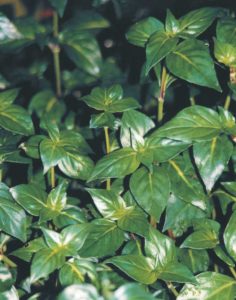
Should readily available protein foods such as meat, fish, eggs and dairy products, become inaccessible due to drought or calamities or war, then, we can use greens, together with nuts, seeds, and sprouts to sustain our protein requirements.
Salad plants are alkaline, and alkaline foods are fundamental to good health. Pain and disease in the body is caused by a build up of toxins around the cells, which creates an acid state (as opposed to alkaline). A variety of alkaline foods can assist the body to clear acid wastes. When our body is very acidic, we are unable to readily absorb minerals and other nutrients from the food we eat. Then, the body may be slower in repairing damaged cells and detoxifying heavy metals or other toxins.
… …
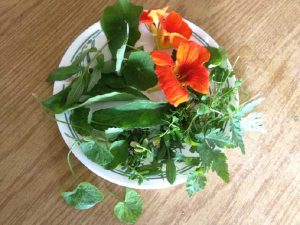
By tossing together a variety of greens, fresh herbs for flavouring, and colourful vegetables, we can create a wonderful meal with a whole range of phyto- nutrients. Many of these are antioxidants that act to destroy free radicals and toxins in the body, and halt cell mutations. Think of salads as a ‘treat to wellbeing’ and a ‘boost to better health’. Call salad leaves ‘green magic’ and this is a good way of encouraging children to eat a salad, saying, ‘When we eat a salad, it can work like magic in the body to make toxins disappear and keep our body healthy’.
Add to your garden, or grow in pots, some of the following plants:
Lebanese cress Aethionema cordifolum, p 96, … …
Sweet leaf bush Sauropus androgynus p 82, … …
Salad mallow Corchorus olitorius, p 81, … …
Drumstick tree Moringa oleifera, p 53, … …
Nasturtiums Tropaeolum majus, p 108, … …
Sheep sorrel Rumex acetosella, p 64, … …
Ceylon salad leaves Basella alba, p 82, … …
Purslane Portulaca oleracea, p 53, … …
Watercress Nasturtium officinale, p 81, 63, … …
Rocket Eruca veriscaria sativa, p 81, … …
Mukunu-wenna Alternanthera triandra, p 81, … …
Mallow Malva sylvestris, p 95, … …
Mushroom plant Rungia klossii, p 82, … …
Chinese watercress also called Kang kong Ipomea aquatica, … …
Warrigal greens Tetrogonia tetragonioides, p 76 and p 82, … …
Betel Leaf Piper sermentosum, p 81, … …
There are so many benefits in using herbs in foods. The aroma, essences or essential oils in herbs represent the life force and energy of plants, and using herbs is a gentle way of stimulating the body’s self- healing process and also to build energy and a feeling of wellbeing.
… …
Green smoothies using chlorophyll-rich leaves like salad mallow, comfrey, nettle, stevia, alfalfa, sweet leaf – blended with fresh pineapple, orange or apple juice, make a quick, delicious and refreshing drink.
… …
Pesto can be made from a variety of herbs and green leaves, oil, nuts, cheese, and garlic. There is nothing complicated in the process of making herb pastes or pesto.
… …
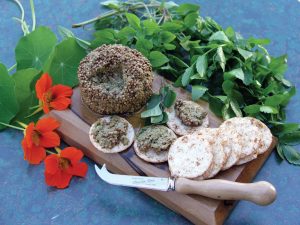
Classic Pesto Use 4 parts (by volume) fresh basil or other herbs, 1 part oil, 1 part nuts (I use sunflower kernels as they are economical), 1⁄2 part grated cheese, 1 teasp. salt, and garlic if desired. Process as smooth or as chunky as you wish.
… …
Another way to get the benefits of fresh greens is as, Raw greens soup: 2 large handfuls of greens, like watercress, spinach, kale, etc; 1 capsicum, 1 tomato, 1 avocado, juice 3-4 lemons, several small pieces of dulse (seaweed), 4 cups of water or water as required to blend to desired consistency. Garnish raw soup with sprouts, grated carrot and finely cut herbs.
A great recipe for using greens is in a baked dish called Incredible quiche Beat 3 eggs, add 11⁄2 cups milk, 1⁄2 cup wholemeal flour, 1 teasp. salt, garlic and onions as desired, and season with herbs. Add 3-4 large handfuls of chopped green leaves.
… …
When growing a variety of salad plants organically, these can be served absolutely fresh: full of nutrients and living enzymes. You will find this rewarding activity will also be a saving to your weekly food budget … what could be better than that!

Plan to prepare a green salad every day. Salads are low in calories and glycaemic index, with a most beneficial glycaemic load effect on human biochemistry. Eat greens, daily, as they help to stimulate the immune system, and offer the strongest support for cellular regeneration. Many natural health researchers emphasise the importance of green leaves and fresh herbs to help prevent premature ageing, illness and fatigue.
Remember: The ‘green blood’ or ‘green stuff’ in plants is valuable for building our blood. The quality of the foods we eat and liquids we drink, determines the condition of the circulatory system. The human body averages 5 litres of blood. Continually circulating through the body, this ‘river of life’ feeds cells, oxygenates tissues, and then returns ‘stale’ deoxygenated venous blood back to the heart. Every three minutes, fresh oxygenated blood flows back through the arteries to feed over 70 trillion cells.
Many researchers have found that the best way to build healthy blood is with fresh green foods. Eating more greens means more oxygen to the cells. Eating greens from fresh edible leaves and herbs may have a preventative and curative action against disease. Green foods help build a strong immune system. So, always remember Dr Bernard Jensen’s wonderful advice: when you are green inside, you are clean inside.
Salads are so rich in nutrients for providing nourishment and energy to the body. Salad greens are natural … so use these foods, freshly picked, just as nature intended. Someone said, “The more we work with Mother Nature, the less we have to depend on Lady Luck.”
Put some ‘green magic’ into your life today!
(all page references refer to How can I be prepared with Self-Sufficiency and Survival Foods?)
• 3 Videos to encourage you to grow
Mark from Self Sufficient Me shares 5 Veggies That Grow FASTER Than GRASS!
Luke from MIgardener shares Intercropping Ideas For Success in The Garden
Mark from Self Sufficient Me shares How to Grow Organic Food in Containers
wishing you health and well-being
Ricky Shipard
sales@herbsarespecial.com.au
